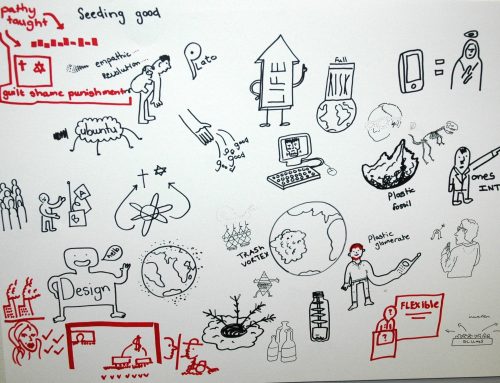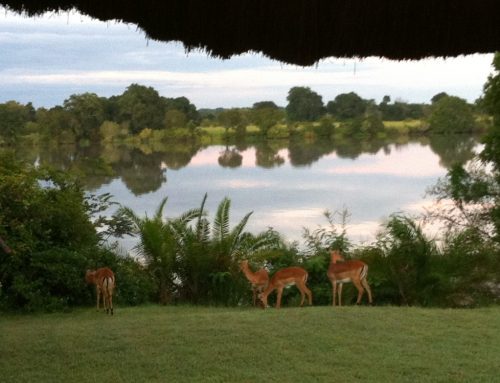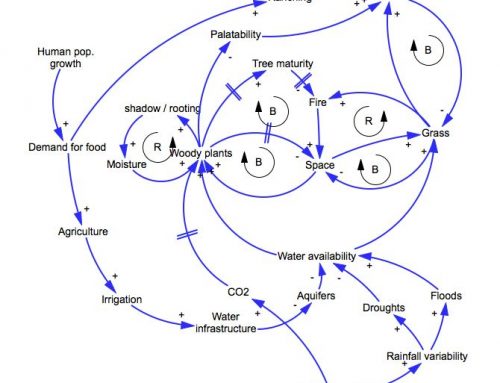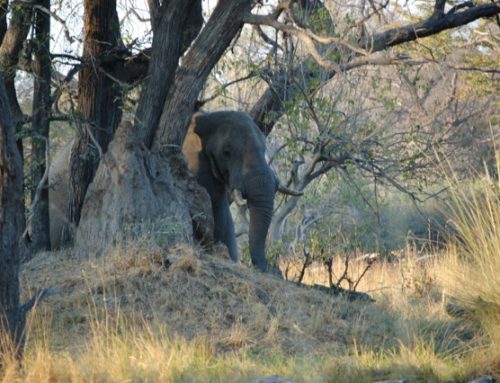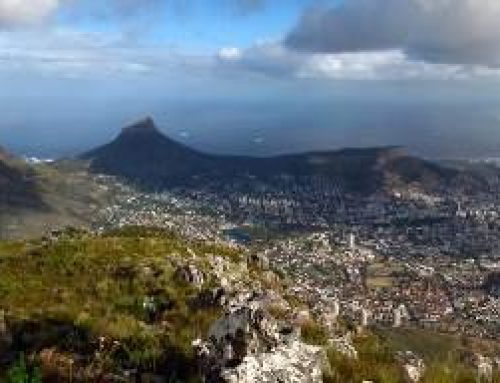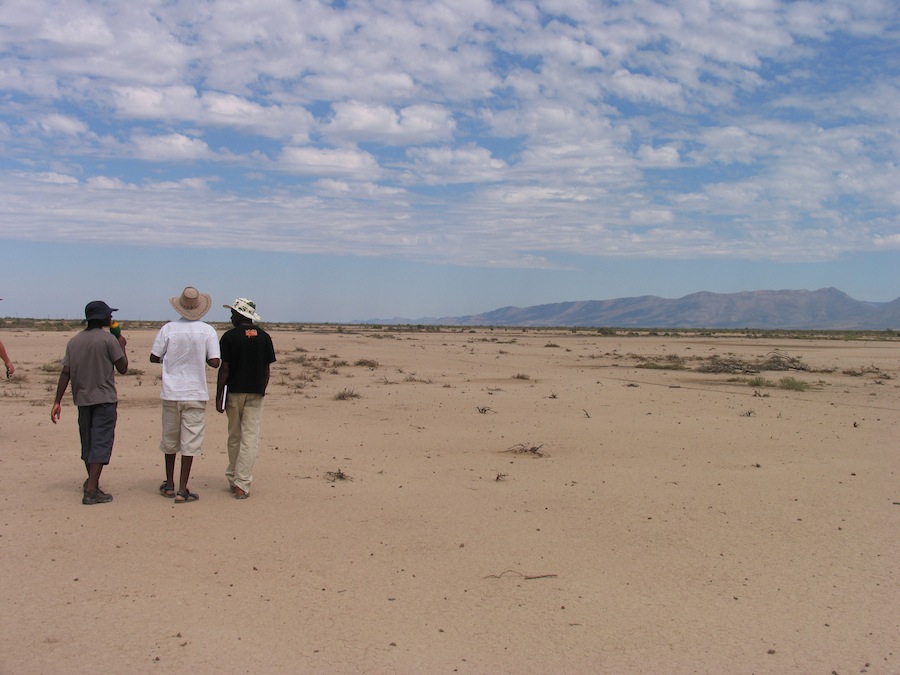
Students ponder restoration aspects in an arid landscape devoid of plant cover
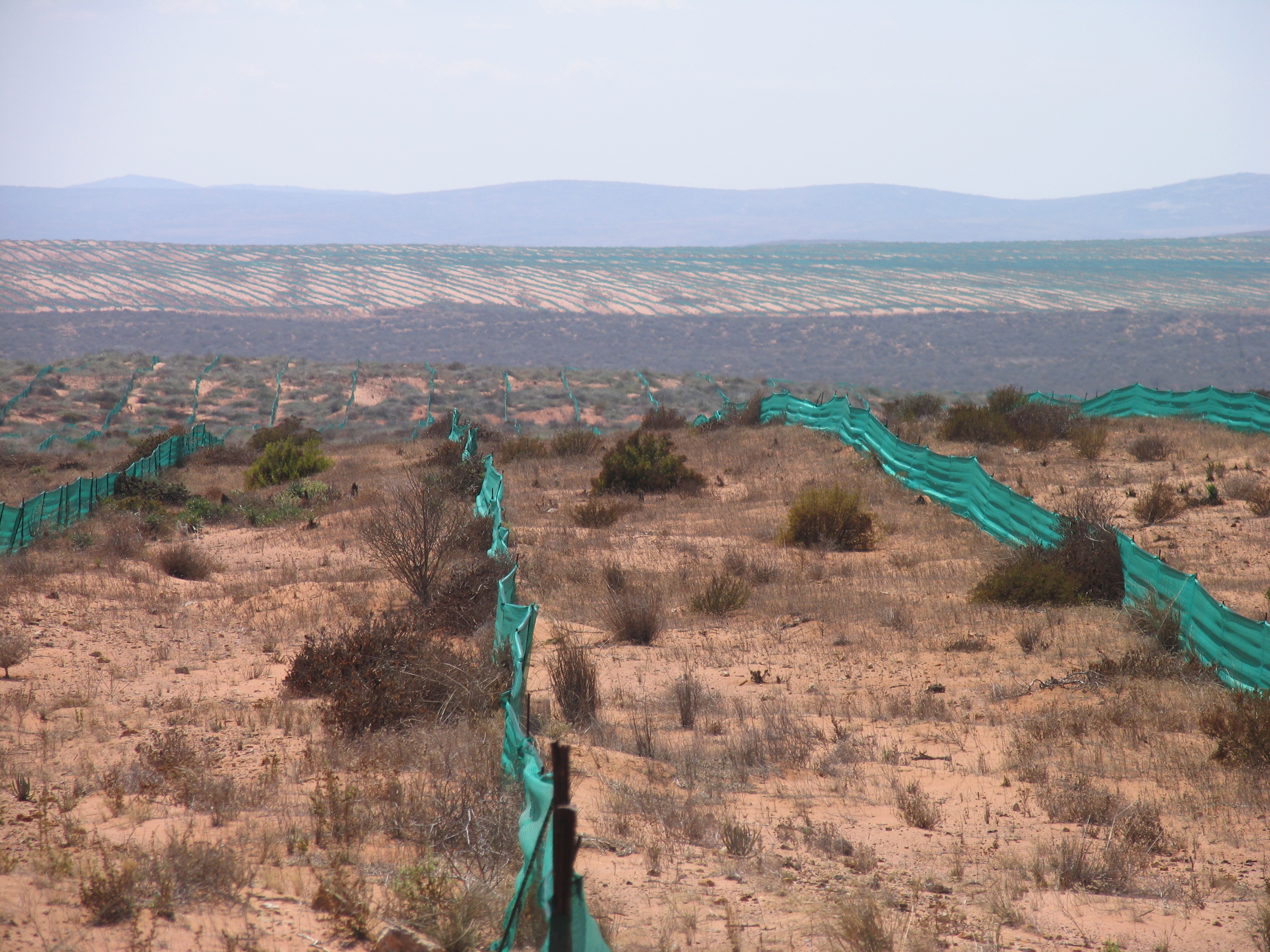
Restoration, according to the Society for Ecological Restoration, is the process of assisting the recovery of an ecosystem that has been degraded, damaged or destroyed.
Project lead: ASSET Research, Prof James Blignaut
Who’s involved?: James Blignaut, Martin de Wit, Sue Milton, Karen Esler, David le Maitre, Steve Mitchell, and Doug Crookes
Project description: Ecological restoration, the process of assisting the recovery of ecosystems that have been “degraded, damaged, or destroyed” (SER, 2004), is now internationally recognised as a key priority, alongside conservation initiatives*, in the quest for sustainable social-ecological systems. The science and practice of restoration has progressed at a significant pace over the past few decades, but substantial challenges remain particularly with respect to scaling-up and financing of large scale initiatives. In South Africa, politically driven social grants and legislative drivers (amongst others) have resulted in a range of restoration initiatives, providing fertile ground for a meta-analysis of the ecological, hydrological, and economic impacts of restoration across a range of contrasting sites and contexts. By conducting this meta-analysis (the first of its kind), we were able to ask the question: can markets (i.e. systems for valuation and payment) provide support for ecological restoration, and if so, under what conditions? Our strategy was to partner multi-disciplinary teams of students who worked collaboratively and considered eight case studies. Student-supervisor teams assessed the impact of ecological restoration on a suite of ecosystem goods and services and on the economy though improved returns on the restored land, enhanced income and job creation. These data were then distilled by a PhD student into a systems dynamic model that allowed the team to conceptualise a risk/return economic decision-making framework which could be used to provide support for restoration. While we acknowledge monetary value and markets are not the only decision-making drivers for restoration and that it is not always possible to derive meaningful monetary values for certain ecosystem services, we were able to identify the conditions under which markets could potentially leverage funding for restoration though a system of payments for ecological goods and services. By conducting our research in a multi-disciplinary, team-based and collaborative way, we not only developed an evidence-based approach to integrating economic evaluation and ecosystem dynamics, but we have inspired a new generation of students primed to tackle the challenging problems of ecological restoration. This study was FUNDED through ASSET research by the Water Research Commission (Project K5/1803) with support from the Working for Water programme.
* the old adage, ‘prevention is better than cure’ applies!
Selected research papers from the project include:
Aronson, J., Blignaut, J.N., Milton, S.J., Le Maitre, D.N., Esler, K.J., Limouzin, A, Fontaine, C, de Wit, M.P., Mugido, W., Prinsloo, P., van der Elst, L., Lederer, N (2010) Are Socioeconomic Benefits of Restoration Adequately Quantified? A Meta-analysis of Recent Papers (2000–2008) in Restoration Ecology and 12 Other Scientific Journals. Restoration Ecology 18:143-154.
Blignaut, J., Esler, K.J., de Wit, M.P., Le Maitre, D., Milton, S.J., Aronson, J. (2013) Establishing the links between economic development and the restoration of natural capital Current Opinion in Environmental Sustainability, 5:94-101
Crookes, D.J., Blignaut, J.N., de Wit, .P., Esler, K.J., Le Maitre, D.C., Milton, S.J., Mitchell, S.A., Cloete, J., de Abreu, P., Fourie (nee Vlok), H., Gull, K., Marx, D., Mugido, W., Ndhlovu, T., Nowell, M., Pauw, M., Rebelo, A. (2013) System dynamic modeling to assess economic viability and risk trade-offs for ecological restoration in South Africa. Journal of Environmental Management 120:138-147.





